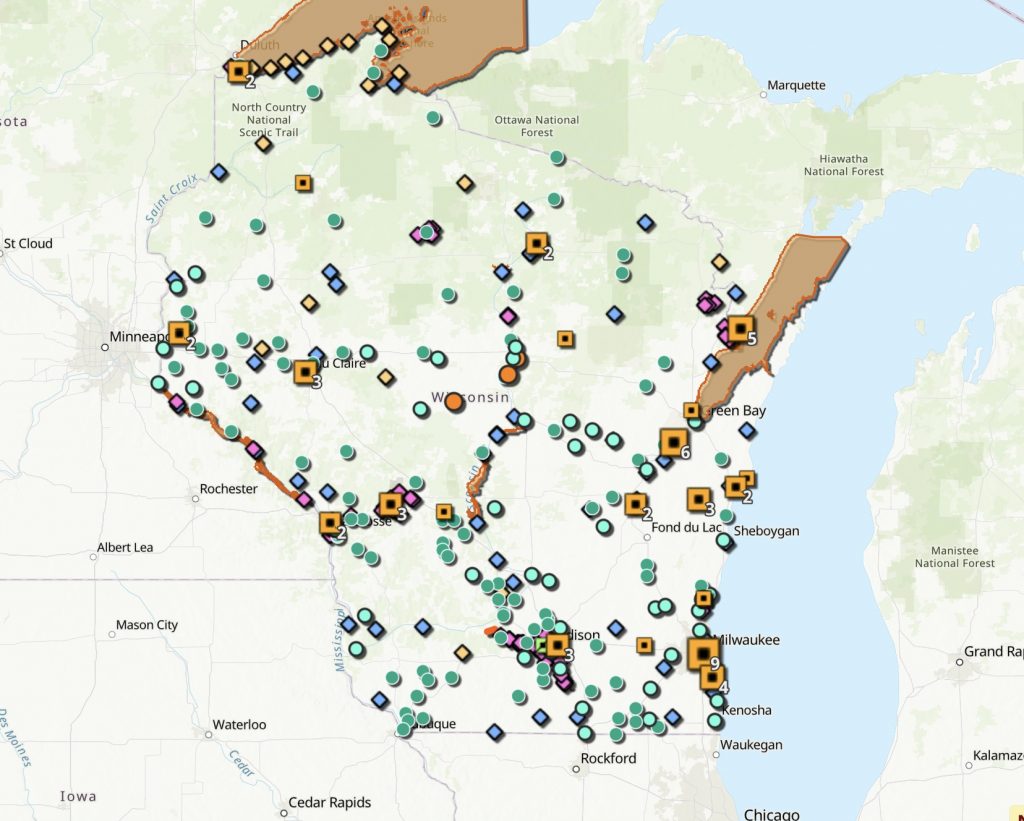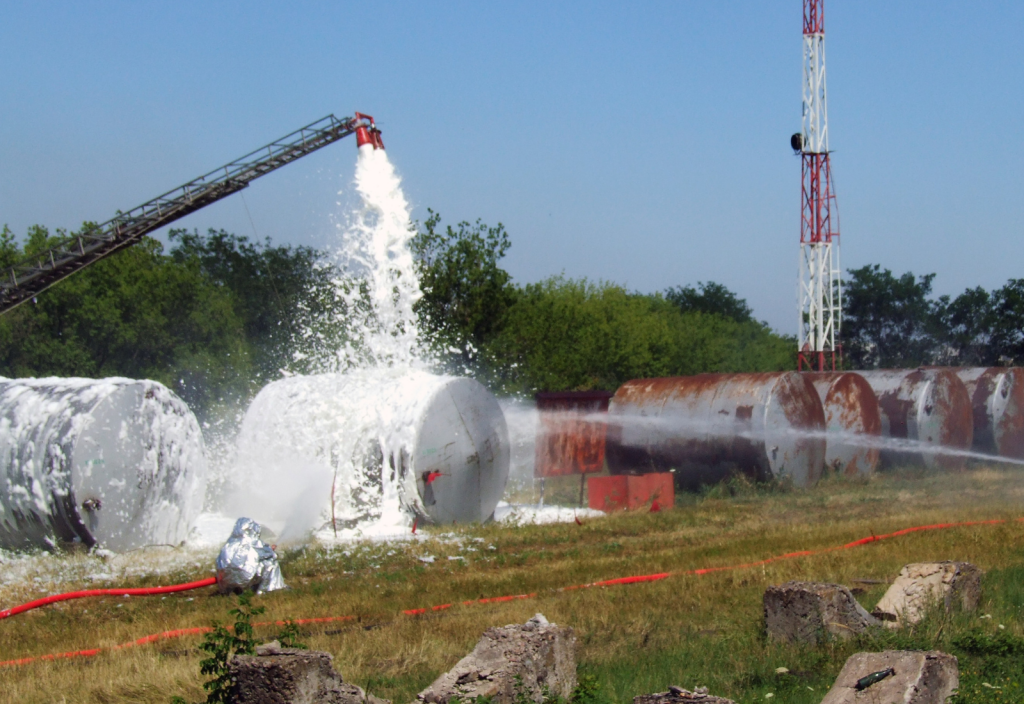What Are PFAS?
Per- and polyfluoroalkyl substances (PFAS) are a class of chemicals with alarming health impacts. PFAS are a class of over 6,000 synthetic chemicals that have been produced since the 1940s. The unique physical and chemical characteristics of PFAS make them resistant to oil, water and temperature. While these properties make PFAS very useful chemicals for a wide variety of products, like Teflon, food packaging, rain-resistant clothing, and firefighting foam, they have contaminated water in many parts of Wisconsin, posing a threat to public health.
How Are PFAS Used?
One of the best-known uses of these chemicals is in firefighting foam. Military bases, airports, and firefighting training areas where these foams are used are among the first places where PFAS contamination has been identified in groundwater here in Wisconsin.
PFAS are also commonly used in textile manufacturing, plastic and paper products (e.g., fast food wrappers), household products (non-stick cookware), metal plating processes, medical products, personal care products (dental floss, cosmetics), and other products.
How Do PFAS Affect Health?
One of the defining characteristics of PFAS chemicals is the carbon-fluorine chain. The carbon-fluorine bond is very strong, so PFAS do not break down easily, leading some to refer to PFAS as “forever chemicals.” This strong bond means that once PFAS get into the environment, or our bodies, they stick around and accumulate. Researchers are still working to better understand the health effects of PFAS. So far studies have shown that there can be multiple health effects from high levels exposure to certain types of PFAS:
- Suppressed Vaccine Response
- Increased Cholesterol
- Increased Risk of High Blood Pressure in Pregnant Women
- Lower Infant Birth Weight
- Increased Risk of Some Cancers, Including Kidney, Prostate Testicular Cancer
- Decreased Fertility for Women
- Interference with Hormones
Based on the current state of knowledge, the primary way people are exposed to PFAS is through contaminated drinking water and eating food containing PFAS (PFAS can bioaccumulate in fish and wildlife) or contaminated by its packaging. Inhalation and incidental ingestion of household dust is also a potential pathway, particularly for younger children.
PFAS Contamination in Wisconsin
The Wisconsin Department of Natural Resources has launched an interactive data viewer to show locations throughout our state that have been impacted by PFAS.
Click here to launch the viewer.

Stories from the field
It’s no exaggeration to say PFAS ‘forever chemicals’ are everywhere, from our shoes to our pots and pans, to our takeout boxes. Some states have found PFAS tainting their milk and meat and contaminating crops. What are the health consequences of population-wide exposure to these toxic chemicals? Amy talks with Clean Wisconsin Science Program Director Dr. Paul Mathewson about the latest research.
University of Wisconsin-Madison researchers say they’ve linked toxic PFAS contamination in Lake Michigan’s Green Bay to Tyco. Hear what needs to happen now to get a handle on growing PFAS contamination across Wisconsin and the world.
Lastest News
Senate PFAS bill amendment falls short, but broad support remains for critical component of the bill
Clean Wisconsin weighs-in on major PFAS bill, calls for changes to language that could weaken spills law
Proposed federal PFAS limits signal growing concern over health risks of “forever chemicals”
Wisconsin gets first ever standards for PFAS as EPA warns the “forever chemicals” pose far greater risk than once thought
NRB takes modest step to protect families from PFAS contamination, leaves out rural Wisconsinites
Wisconsin finally has enforceable limits for PFAS forever chemicals in drinking water and surface water. That means all municipal water utilities in the state will be required to test for two of the most harmful types of these chemical compounds. It also means more attention for contaminated lakes, rivers and streams in Wisconsin like Starkweather Creek in Madison.
Marinette and Peshtigo are communities in Wisconsin struggling with PFAS contamination. In this video by Clean Wisconsin, we hear from local residents, elected officials, and state agency staff about the impacts of PFAS pollution that has left many with contaminated drinking water.


